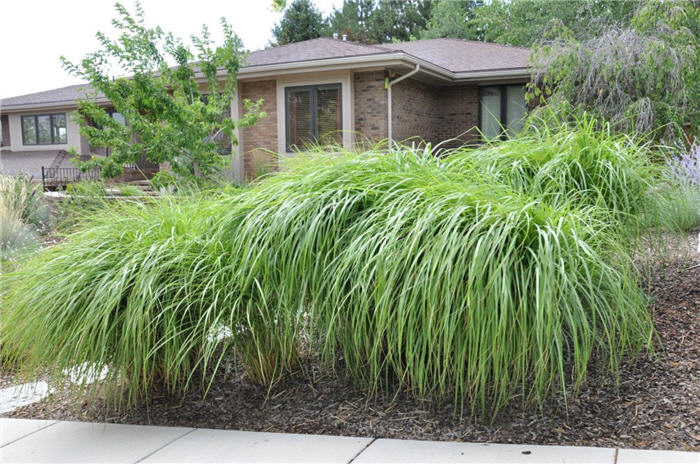| Botanical Name: Miscanthus sinensis 'Blutenwunder' | |
| Common Name: Blooming Wonder Maidengrass |

-
Anatomy
-
Culture
-
Design
Plant Type
Perennial, Grass
Height Range
6-12'
Flower Color
White
Flower Season
Summer, Fall
Leaf Color
Green
Bark Color
n/a
Fruit Color
n/a
Fruit Season
n/a
Sun
Full, Half
Water
Medium
Growth Rate
Moderate
Soil Type
Sandy, Clay, Loam, Rocky, Unparticular
Soil Condition
Average, Rich, Well-drained, Dry
Soil pH
Neutral
Adverse Factors
n/a
Design Styles
Formal, Japanese, Mediterranean, Ranch, Spanish, Native Garden
Accenting Features
Specimen, Unusual Foliage
Seasonal Interest
Winter, Summer, Fall
Location Uses
Background, Perennial Border, Shrub Border, Foundation, Patio, Raised Planter
Special Uses
Cut Flowers, Hedge, Screen, Mass Planting
Attracts Wildlife
Birds
Information by: Stephanie Duer
Photographer:
Photographer:
-
Description
-
Notes
Miscanthus are clump forming, cool season grasses; nearly indispensable additions to the garden. Blooming Wonder is a graceful, upward arching maidengrass. Leaves are green and about 1/2 inch across; the grass grows to about 60 to 62 inches. Plumes flower late August until frost, with the stalks ranging in height from 70 to 100 inches.
Miscanthus grow in full sun to bright shade, though white variegated forms appreciate a little mid-day shade. Provide well drained soils; sandy-loam to clay-loam will do just fine. All Miscanthus should be cut back in late winter to early spring, about the time that spring bulbs are emerging. Cut back to within inches of the ground. Like other ornamental grasses, Miscanthus pairs well with spring flowering bulbs. See Guides for details.